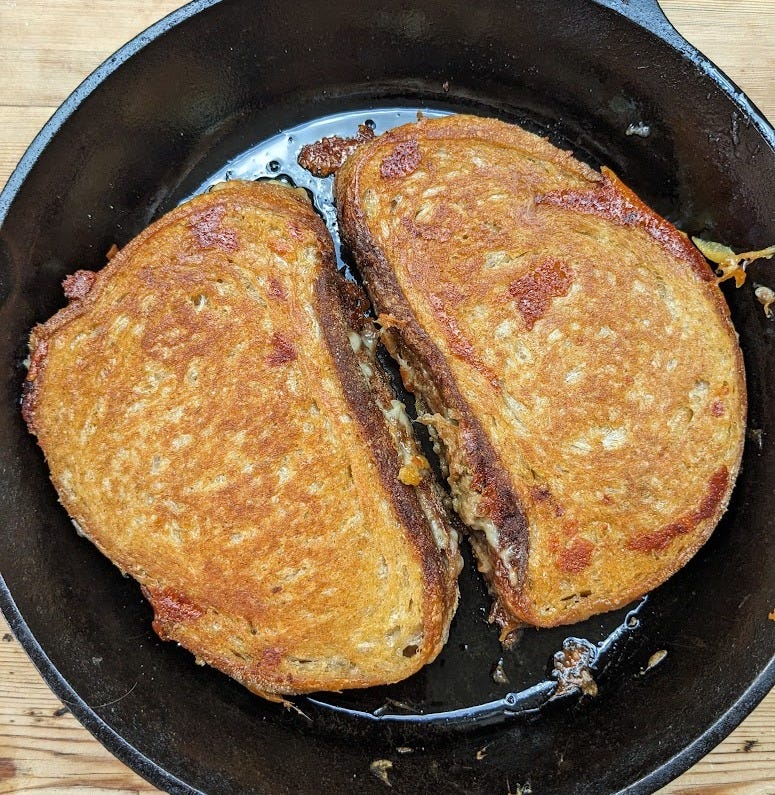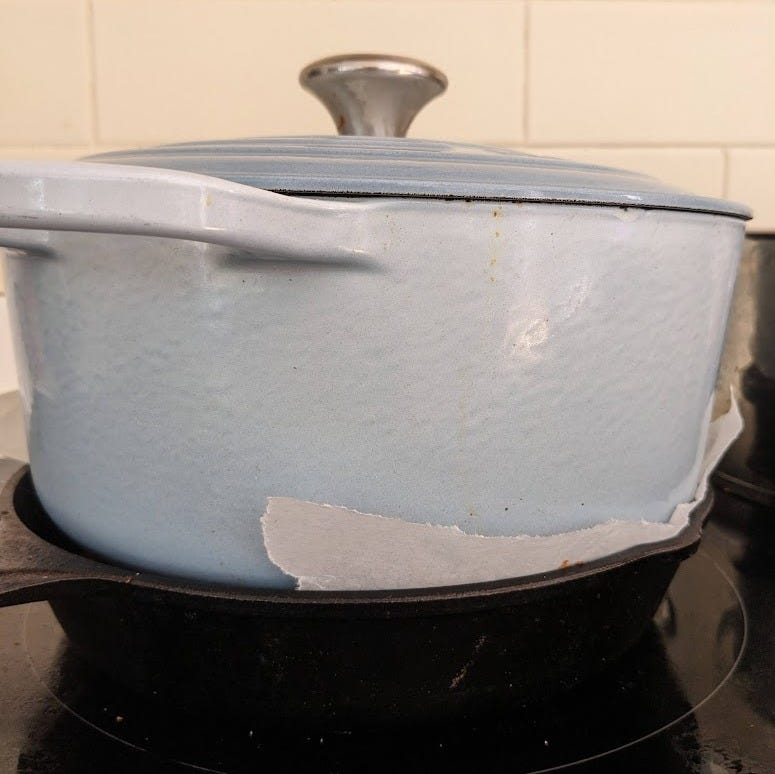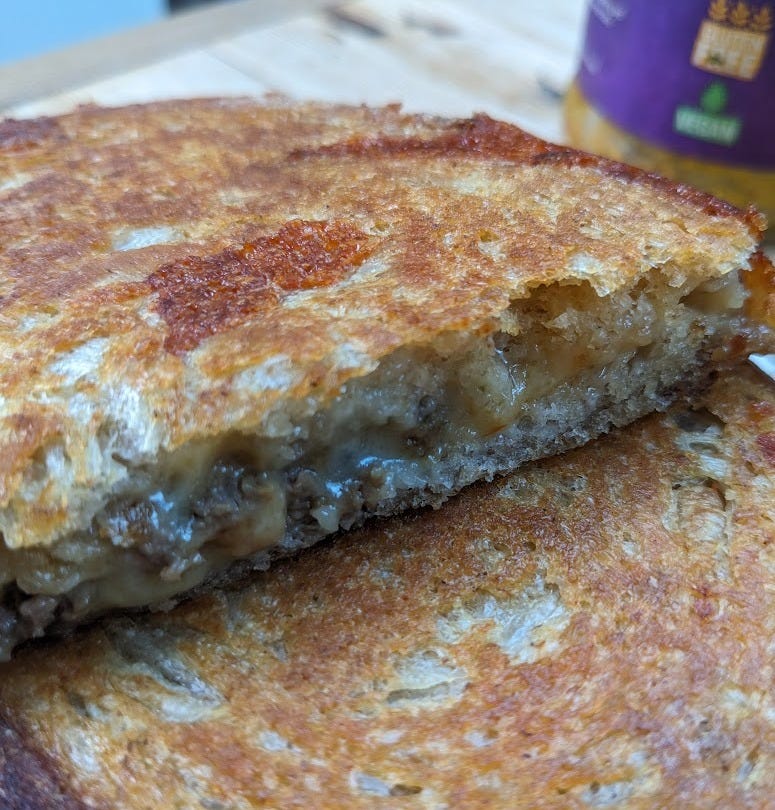The Countersignal Sandwich
While the elbows-out technocrats of tomorrow fell out the office to grab their Lebanese lunchboxes and Korean kimchi noodles, I stayed put, only to be found upon their return with a cheese and butter sandwich, a pack of quavers and a cup of tea.
If you do not immediately understand the gravity of my status flex in that moment, then your grasp on biological and psychological sociodynamics is very poor. Thankfully you now have the rest of this post to educate yourself.
The relevant biology lies in Zahavi’s handicap principle, which explains why some male animals display seemingly disadvantageous traits. The usual suspects here are brightly coloured prey fish who would be better off camouflaged, peacocks with fastidious tails, or stags with antlers of such abhorrent proportions that they’d be more hindrance than help in combat. Zahavi was the counterintuitive genius who went against the grain to find a solution — instead of continuing to argue that these traits weren’t disadvantageous, he proposed that males develop them precisely because they are disadvantageous. The males prove to prospective females that they are so very healthy, fast and strong that they can put up with these self-imposed impediments, and in turn win their mate’s undying affections.
It’s thought that the first person to take the handicap principle and apply it to humans was Scott Alexander, who coined the term countersignalling in his writings on lesswrong and his popular blog Astral Codex Ten. However it’s arguable that the first person was actually me, when I explicitly applied Zahavi’s handicap principle to private tutoring over 10 years ago in a little known blog post:
Debilitate yourself as a tutor by not bringing a bag, nor making any effort with your appearance whatsoever… The parents then look to their neighbour’s tutor wearing a “shirt” and carrying a “bag”, and see how he has to dress himself up just to survive in this game. They then reflect on their current tutor, knowing he must be the real deal if he can carry on being successful despite such debilitating traits in his appearance.
The specialists in countersignalling were the English aristocracy. They watched with disdain at the turn of the 19th century as the nouveau riche made gauche displays of their wealth at every opportunity. They brought flashy carriages or cars and made self-conscious performances of the sort immortalised so mercilessly in The Great Gatsby. This was because they had to; new to wealth, they had to prove to the world they had it. Ostentation hence became their marker, and the aristocrats were required to differentiate. They became famous for cold and drafty houses, they invented shabby chic with their jackets and elbow patches, they never brought anything new and kept old rugs, beds and silverware that required an army of servant to dust and scrub every day. The aristocrat had only to prove that he had nothing to prove.
Aristocratic eating habits were famously subdued and eccentric. It was nursery teas from childhood to senility, often consisting of cucumber sandwiches and plain boiled meat. My father told me that his friend, one of the last of the aristocrats, would only eat offal. Arabella Boxer’s Book of English Food details the eating habits of large estates during the 1920s-30s and in it she describes the Duke of Beaufort at badminton, who would never have elaborate cuisine, which the Beauforts regard as “restaurant food” that you have “during the week, in London” — i.e. nouveau riche pretensions if ever you saw them.
They’d instead eat fish pie with white sauce, hard-boiled eggs in cheese sauce, rather a lot of lamb and pheasant and chops in aspic with minted peas arranged concentrically around the plate. The aristocrat ate like the common man to be distinguished from the aspirant. Arabella Boxer herself was the daughter of Francis Stuart, 18th Earl of Moray, who she described as only liking the plainest things and as having such a horror of rich sauce, butter and cream, that it literally made him ill. A visceral revulsion that may lay less in lactose and more in confronting his inner-bourgeois.
Signalling and countersignalling often transcend material displays. Intellectual hipsterism emerges when hyper-literate insiders embrace low-status tastes to distinguish themselves from the university-educated class of the opinion economy. My friend inadvertently gave an example last night when she said her film-buff partner was uncharacteristically snobbish in deriding the recent TV phenomenon Adolescence. Yet this is exactly characteristic when the educated masses come to enjoy something within your specialised domain. The countersignalling status-opinion chain on Adolescence might go something like:
Low Status Opinion
It was a bit complicated, I like Friends
→ Opinion Of Educated Elite
It was brilliant drama and so reflective of key political issues of our time
→ Ultra-Elite OP Level 1000 Wizard Film Buff Opinion
One shot filming was contrived, there was little depth, and I’ve seen many better works receive less attention this year
More than film though, food and wine is the currency of taste in the cosmopolitan class. Total social ostracisation can befall any of us in a moment over mispronouncing the po in mapo tofu or saying bolognese when discussing ragù. We prove our pedigree through avoiding pitfalls and signal our worldliness through regional cuisine choices at workplace lunches. Unless of course you are an aristocrat of the gastronomical world - say by being a food writer with 246 subscribers - in which case you dine like an aristocrat with a cheese sandwich, a pack of quavers and no fuss.
Countersignals may seem like pretence, but they offer costly signals that are hard to fake. The brightly coloured fish must be good at swimming, and the stag with oversized antlers better be good in the ring. The knowledgeable person cannot defend a controversial or low status taste without having researched the matter and showing some skill in articulation.
So as Rob Henderson is clear to warn, do not adopt countersignals you can’t afford. Take being Fashionably Late, a signal in which those already popular can afford missing the social networking benefits of being early. However if you’re not well known, you’re better off going sooner and making friends. You legitimately cannot pay the signal’s price.
Which takes us back full circle to the cheese sandwich at the office; at first glance, a masterful display in the art of countersignal. However the countersignal is predicated on everyone knowing my prestige within the food industry (again; 246 subscribers). Unfortunately though they do not. In fact they know nothing about me now except that I make limp sandwiches with plastic cheese from the office fridge, and chase it with quavers on a good day, and flaming hot monster munch on a bad one. It’s a cultural blunder on the scale of bringing a KFC back to the office communal dining area. Therefore I have only been mocked for it since, with the nouveau gastronomique sniggering at me over their ostentatious displays of teriyaki salmon donburi.
I want to tell them that I have nothing to prove, but in saying so, I am telling them that I have everything to prove. The true cost of the countersignal has suckered me, and I am left with little other option than to come here and recover the broken shards of my status. I can but endeavour to reach 1,000,000 subscribers, and then in all my fame and glory, those same souls who mocked me will look back to my cheese sandwich, my bag of quavers, my tea, and say; god damn, the man was a genius.
Gourmet Cheese Toastie
You need two things to make a good cheese toastie; a cast iron skillet and a weight. Also you need bread and cheese, though I was assuming that to be a given.
Ingredients
Grated Cheddar Cheese (100-150g per person)
Bread
Butter
Some rogue extra filling?
Pickle/chutney/hot sauce on the side
Heat your cast-iron pan on medium heat until it’s hot. Butter the outside of the bread. Mix cheese with rogue filling if you want to add anything (i.e. leftovers from another meal; roast veg, bolognese…. in today’s case for me kofta curry).
Assemble sandwiches and place a large weight on top of them (in my case I used a le creuset with yesterday’s kofta curry still in it, and put some baking paper between pot and sandwich to stop sandwich getting dirty). Let it cook for about 5 minutes a side. Serve with pickle.





